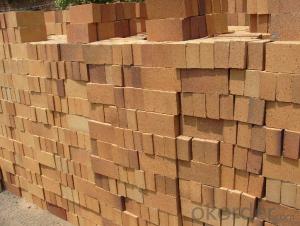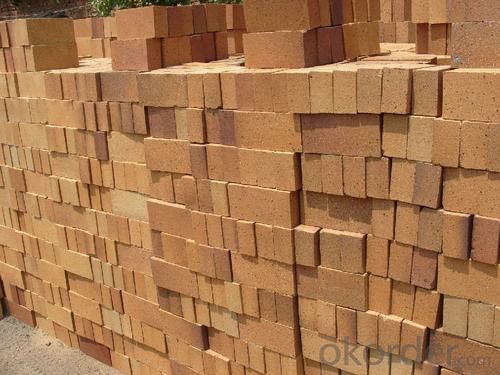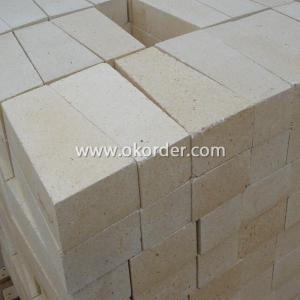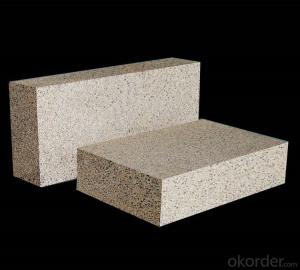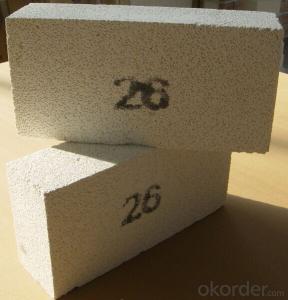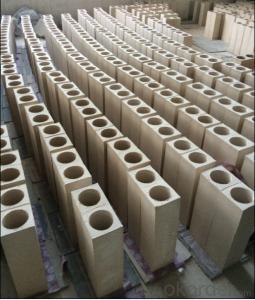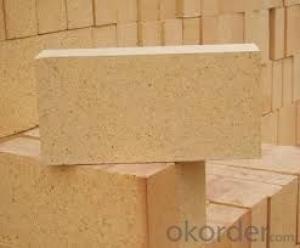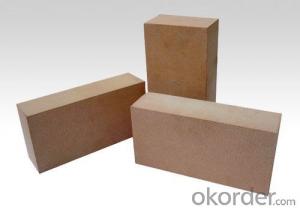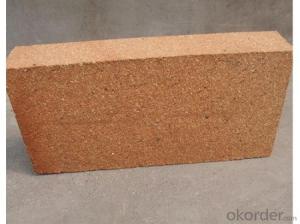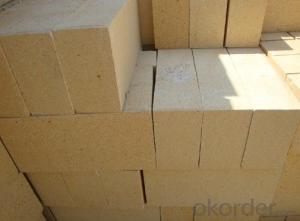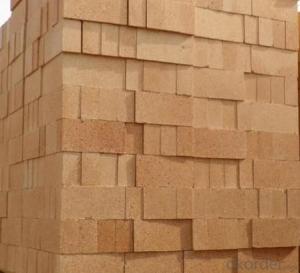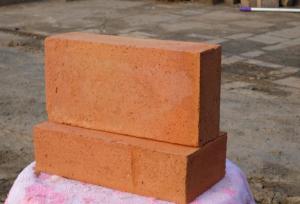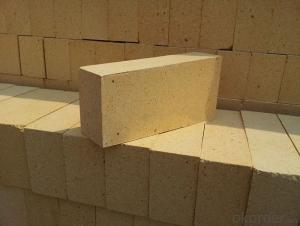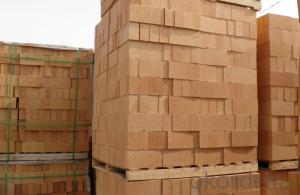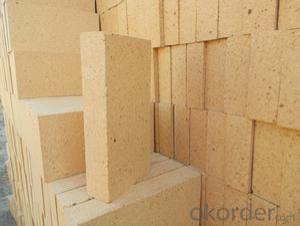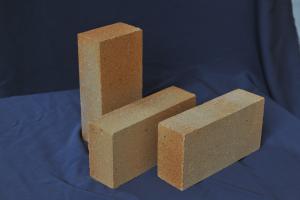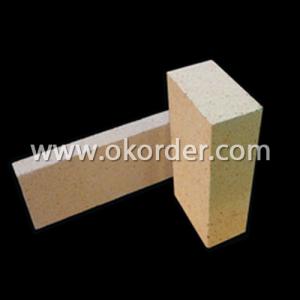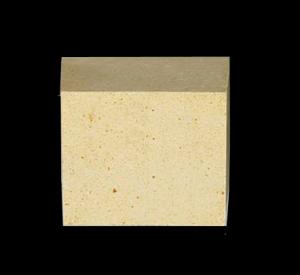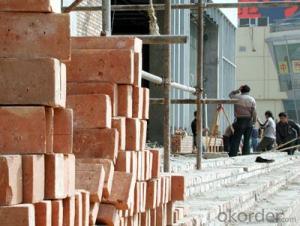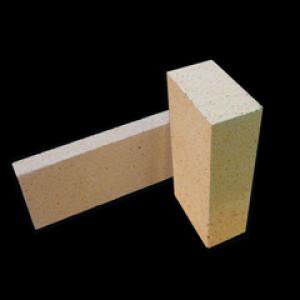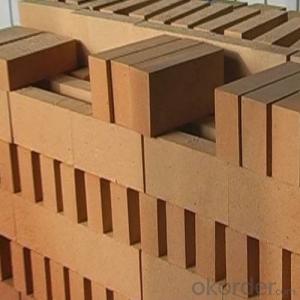Fireclay Brick - JN 40 Brick Fired Furnace Brick Lining Refractory
- Loading Port:
- Shanghai
- Payment Terms:
- TT OR LC
- Min Order Qty:
- 1 m.t.
- Supply Capability:
- 10000 m.t./month
OKorder Service Pledge
OKorder Financial Service
You Might Also Like
CNBM provide high quality Refractory Fire Bricks that are used on wide range in the various industries like Cement, Glass and Steel. Refractory Fire Bricks are provided as per the quantity and specifications required by the customers.
Fire Clay Brick Features:
1.Good thermal stability,lowthermal conductivity, good insulation performance.
2. Low bulk density, good integrity, high mechanical strength.
3. Good thermal shock stability, good resistance to abrasion and corrosion.
4. Good volume stability at high temperature.
Fire Clay Brick Application:
1. Widely used in various kilns due to its cheapness and general tray package
2. All parts of furnace lining for middle and small capacity blast furnace.
3. Low temperature parts of waste incinerators and glass melting furnaces, etc.
4. Widely used in metallurgy, construction (glass and cement), chemical industry, electric power and machine building.
Specifications
1. Fire Clay brick professional manufacturer
2. ISO 9001 certificate
3. Credible Quality
4. Advanced machine
Technical data:
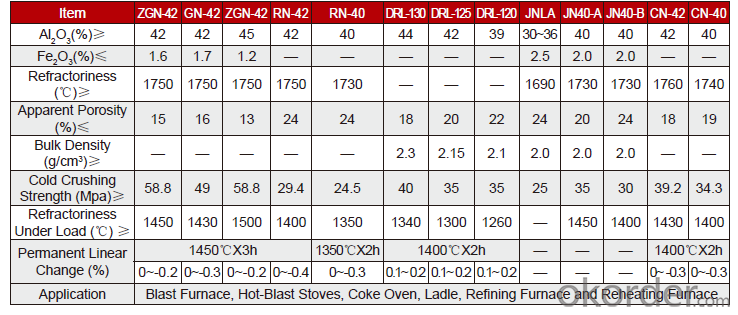
Q1 What’s the transport method?
A1 FCL delivery goods with wooden pallet or wooden case by sea; If LCL delivery, must with wooden case; Sometimes need open top, flat rack or bulk cargo.
Q2 What’s the required payment term?
A2 Generally 30% TT as the prepayment, 70% TT before delivery. If need, 100% Irrevocable Letter of Credit or negotiation.
Q3 Which country are our products exported to?
A3 Apart from entire Chinese market, the US, Russia, Japan, Korea, Australia and some Southeast Asian Nations.
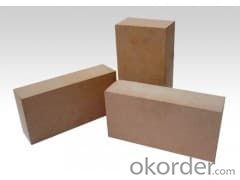
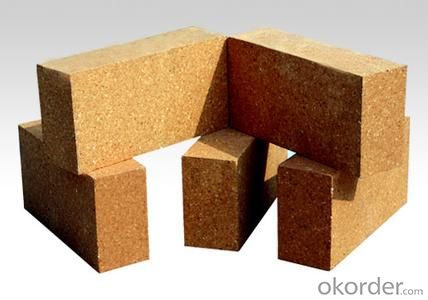
- Q: What are the release agents of refractory bricks?
- Alkalinity, the production process of alkaline, acid and alkali resistant transparent instant thickening powder, you can adjust the proportion according to the cost and needs of quality, environmental protection: One: Add the preservative into water to mix, after soaking one hour, then mixing evenly the production ratio, and then add the super core release agent into water to mix, add flavor pigment masterbatch into water to mix with water mixing, ensure completely dissolved, then add the waste oil, falvor is appropriate amount= release agent. Two, the newest recipe of release agent super core release agent masterbatch, waste engine oil, water, instant acidproof and alkaliproof transparent thickening powder, wire drawing powder, preservative, flavor and pigment= release agent super core wire drawing powder with water mixing, it is the most newly developed special core masterbatch and engine oil of Chengdu Hengfeng Hongye detergent factory, and it doesn't contain toxic solvents, especially 1, it has the following features, after thickening more than half an hour or so, mix evenly is ok, in a few seconds will waste oil and alkali: 10% of waste engine oil, 20% of release agent core masterbatch, 88% of water, 500g instant acidproof alkaliproof transparent thickening powder, 80g wire drawing powder, 1g pigment and preservative and lubricating oil and industrial grease, these integrate with water.
- Q: What types of refractory bricks are divided into?
- Chimney and flue are places that high temperature gas of sulfur gathers, it should use acid material. Refractory material is divided into three major parts: acid, neutral and alkaline.
- Q: Are sintered brick concrete bricks?
- Sintered brick: brick made of clay, shale, coal gangue or fly ash, made by molding and roasting at high temperature. Bricks used for masonry, load-bearing and non load bearing walls are collectively called sintered bricks.According to the raw materials, they are divided into sintered clay brick, sintered fly ash brick, sintered coal brick and so on.A sintered brick with a solid or void ratio of less than 25% is called a sintered ordinary brick.The production and use of ordinary clay brick has been in China for more than 3000 years. Nowadays, ordinary clay bricks still dominate the wall materials used in construction projects. Although the ordinary clay brick has many disadvantages, due to its low cost, simple process, design and construction technology is mature and people's inertia and other reasons, the ordinary clay brick for quite a long period of time, especially in rural areas, is still one of the main wall materials.
- Q: What is the meaning of special shaped refractory brick material n-2b?
- In fact, there are many kinds of refractory bricks, titanium, high alumina refractory brick, after drying. The mineral composition of the clay brick is mainly kaolinite (Al2O3·2SiO2·2H2O) and 6% ~ 7% impurities (K, etc.). Clay refractory bricks are iron oxide sintered by 50% soft clay and 50% hard clay clinker ingredients according to a certain granularity requirements under the high temperature of 1300 ~ 1400 degrees), perlite
- Q: What is the problem about splintering when the refractory brick is fired?
- There are many bubbles inside the refractory brick, it is also possible that the brick itself is not up to the standard about volume density, then refractory brick fragmentates. There are many reasons, may be in the process of repression
- Q: How many degrees of refractory brick if its surface turns red, how to test the temperature of refractory brick after it is burnt to red.
- But it depends on materials; for example, if clay brick is pink, it calls underburnt temperature is 700 degrees -900 degrees, paste red is called overdo temperature 1350 degrees -1390 degree, if the color turns heavier, it will be deformation. there are many reasons for refractory bricks sintering
- Q: Are buildings allowed to use red bricks?
- Is the red brick with clay, shale, coal gangue as raw materials, crushing, mixing kneading with artificial or mechanical pressing, sintering and building bricks after drying at 900 centigrade temperature by oxidizing flame firing, invented by the babylonians.
- Q: What are the differences between fired brick and clay brick?
- . Sintered brick is mainly different from cement bricks and so on, not burning bricks at high temperature. Clay fired brick is widely used in paving roads, pavements and clean walls.
- Q: Is the thickness of the kiln lining and the refractory brick the same concept?
- This is certainly not the same. The thickness of the refractory brick can be arbitrary, the thickness of the kiln lining is generally designed according to requirement
- Q: How to make refractory bricks? ? ?
- Can knock, use angle grinder to slowly cut off the glaze layer outside the refractory brick, and then use hand to gently tap, to compare the complete China to do the work of the destruction of the situation
Send your message to us
Fireclay Brick - JN 40 Brick Fired Furnace Brick Lining Refractory
- Loading Port:
- Shanghai
- Payment Terms:
- TT OR LC
- Min Order Qty:
- 1 m.t.
- Supply Capability:
- 10000 m.t./month
OKorder Service Pledge
OKorder Financial Service
Similar products
Hot products
Hot Searches
Related keywords
